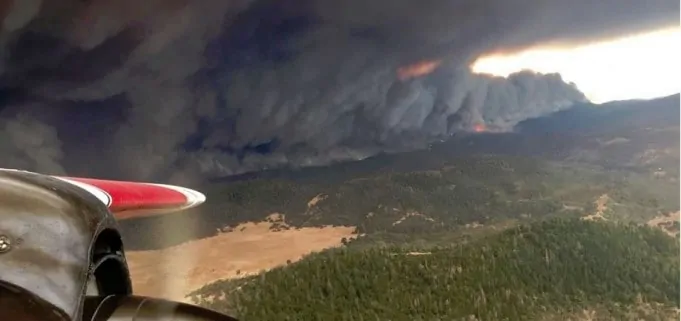Smoke taint is among the biggest concerns for winemakers dealing with the after effects of recent California wildfires. As if the horrific damage to crops, homes, and vineyards isn’t enough, the negative impact of the fires could, it appears, be felt for years (and vintages) to come.
Even when a vineyard has managed to avoid the flames, writes Elin McCoy, smoke can still do plenty of damage. Her article “What Do California’s Wildfires Mean for the 2015 Wine Harvest?”, is an insightful, if not depressing, look at the issues confronting wine regions, most notably those in Lake County, located just north of the town of Calistoga. Per CalFire, the Valley Fire (which started on Sept. 12, 2015 and is now the third worst in California’s history) has scorched some 76,000 acres, destroying 2,000 structures in the process.
McCoy notes that the famously thin-skinned grape, Pinot Noir, may be especially vulnerable to the negative consequences of smoke floating in the air:
“Red wines, which are macerated with the skins and then aged, end up showing the most smoke taint, though filtration and high-tech winemaking methods can remove some of it.”
Washing a grap’s skin doesn’t necessarily help. That’s because “smoke compounds enter a vine’s sap” and ultimately reach the grape itself.
Smoke hung over the valley for weeks, like some version of nuclear winter.
An estimated 35 wineries and 150 growers could be impacted.
More #ValleyFire victims head home as fire crews make progress. http://t.co/9T6sYG30Jc pic.twitter.com/xvU9oFaojY
— SFGATE (@SFGate) September 24, 2015
I remember tasting Anderson Valley Pinots in 2009, and the power of smoke taint. An aroma of charred wood came off the wine when I took a sniff. It was similar to the smell you’d get after dousing an open fire with water. Quite unmistakable. And, of course, unfortunate. All those years growing the grapes, harvesting them, and bottling the wines for something that is pretty much undrinkable and worthless in the marketplace.
Fortunately, according to Cal Fire, the Valley Fire is now 97% contained.
Elin McCoy’s piece about the impact of the fire on the wine industry can be found on Bloomberg.


